Battle Island is a small island off the east coast of Labrador. Although this island is only 16 square kilometers, Battle Island one of the few places that preserves the youngest pre-Grenvillian sediments. Why does this matter you ask? I am trying to understand the changes in the chemistry of the continental crust due to the collision of two continents. In order to properly address this question I need to collect samples from the pre-, syn-, and post-collision rocks. Although the Himalayan orogeny is a classic continental collision the collision of India with Asia is still happening. The Grenville orogeny is a perfect place to test my hypotheses because the Grenville represents a classic continental collision that completed its cycle nearly a billion years ago. Battle Island provides the perfect place to collect a sample of the youngest pre-collision sediments of the Grenville orogeny.
Battle Harbour was established in the 1770s as a fishing station. Throughout the 19th century, it was the site of a thriving saltfish, salmon, and seal-processing complex, and was the economic and social centre of southern Labrador. The once abandoned settlement has recently been given a new lease on life as a result of a 7 year restoration project undertaken by the Battle Harbour Historic Trust, and is now a major tourist destination in southern Labrador.
Battle Island is situated in the ~1.4-1.5 billion year old Pinware terrane which is similar to the Granite-Rhyolite Province in the US. The Pinware terrane is dominated by quartzofeldspathic gneisses and granitoids derived from subduction related processes. Directly east of the Pinware terrane on the Battle Island is a small group of supracrustal rocks (i.e. rocks derived from surficial processes). Due to subsequent Grenville and possibly Caledonide orogenies, these rocks are now metamorphosed to amphibolite facies although still preserving original sedimentary features. Rock types on Battle Island include a psammitic, calc-silicate, and semi-pelitic schist, quartzite, amphibolite, granitic pegmatite, and diabase.
To access the rocks on Battle Island, I traveled to Goosebay, Labrador and drove the long, lonely Trans-Canadian Highway to Mary’s Harbour, from which I took a ferry to Battle Harbour on the west side of Battle Island (seen above). I was accompanied by four geologists from various Canadian institutions.
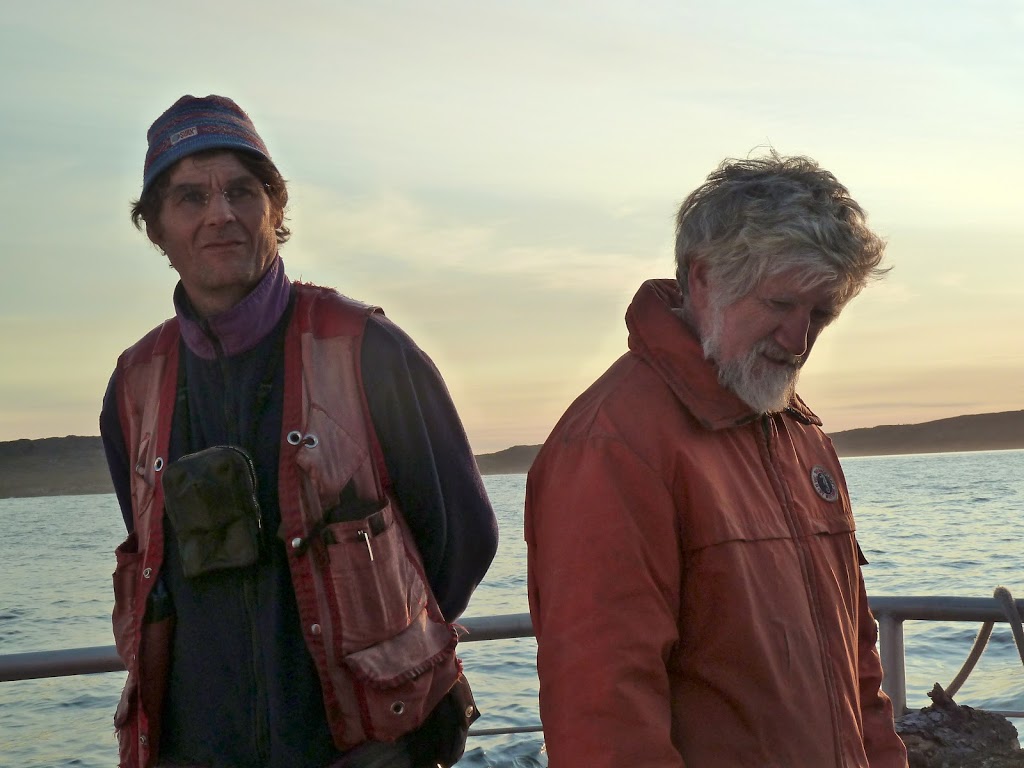 |
| Wouter Bleeker (Geol. Suv. of Canada) and Charlie Gower (Geol. Suv. of Newfoundland and Labrador) |
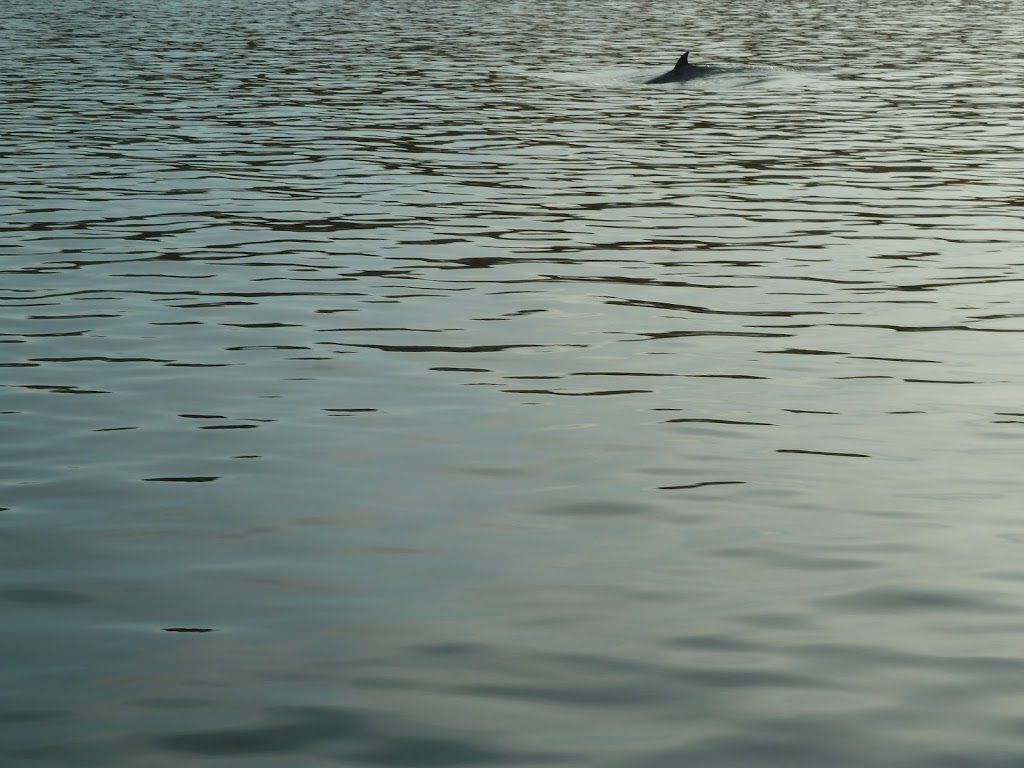 |
| Minke Whale |
After a 45 minute ferry we came arrived at the Battle Harbour Tickle (small strait). The recently restored town looks as though it came right out of the 19th century. All wooden buildings, with most shoreside buildings on stilts. The island is completely off the grid and is now run entirely on a diesel generator. Because this operation is so expensive to maintain, in the 1960’s the Canadian government issued a relocation order for all of the permanent residents of the island. Thankfully the Battle Harbour Trust and the tourists are willing to foot the bill to preserve this historical landmark.
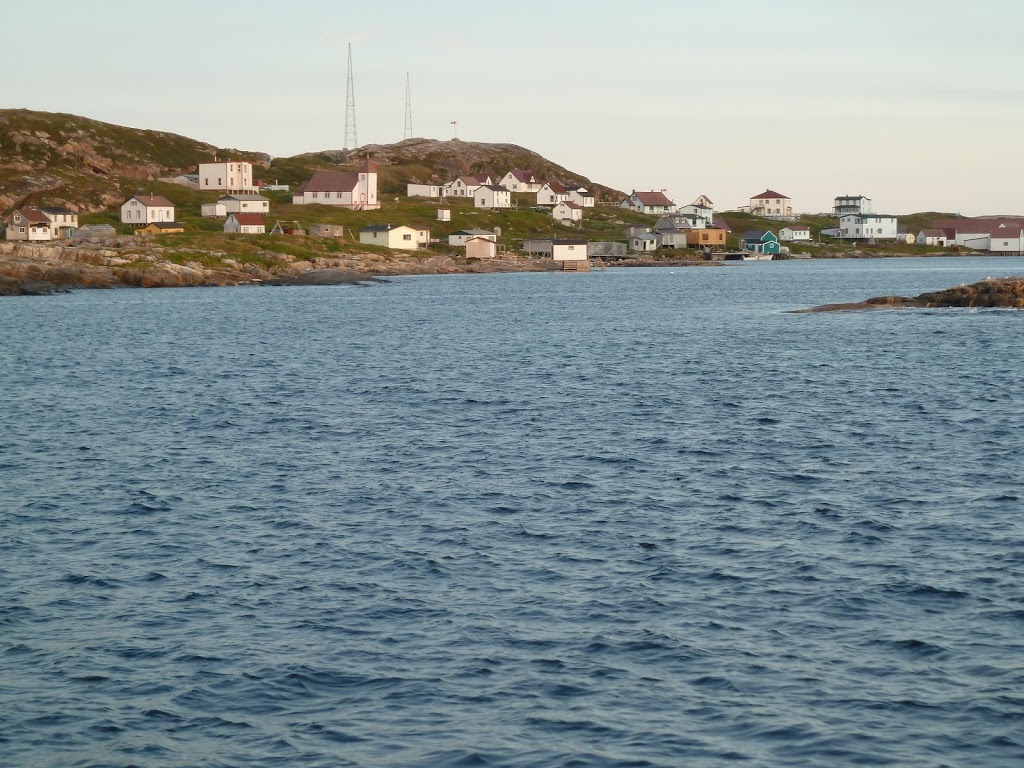 |
| Arriving at Battle Island |
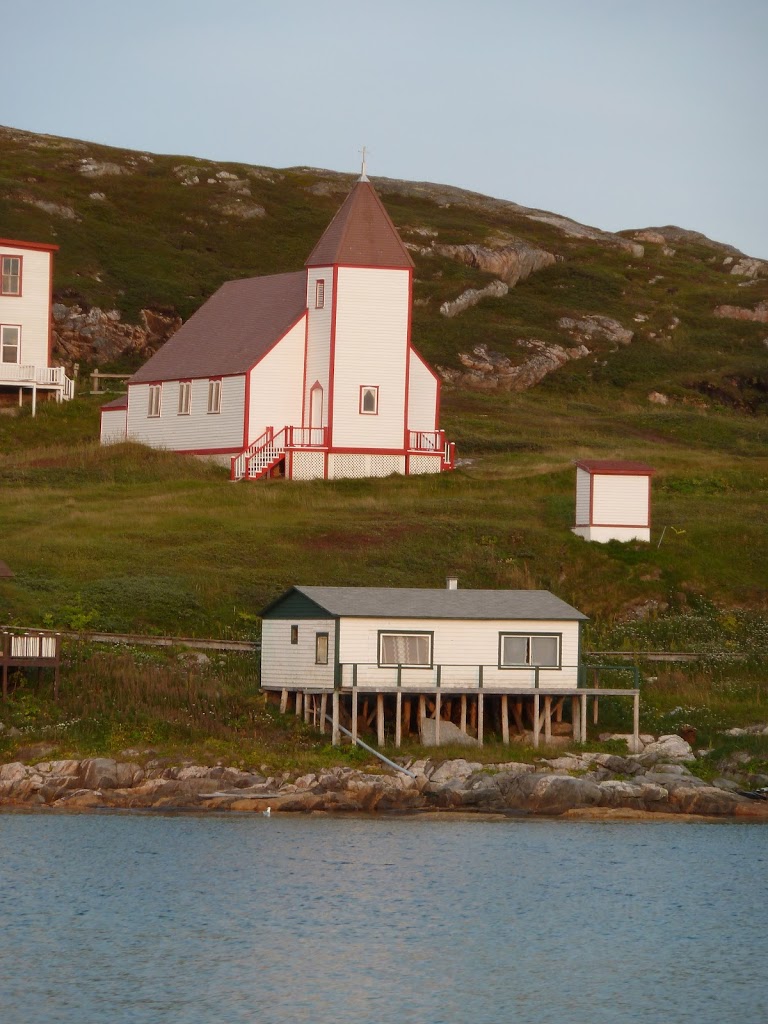 |
| Battle Harbour Chapel |
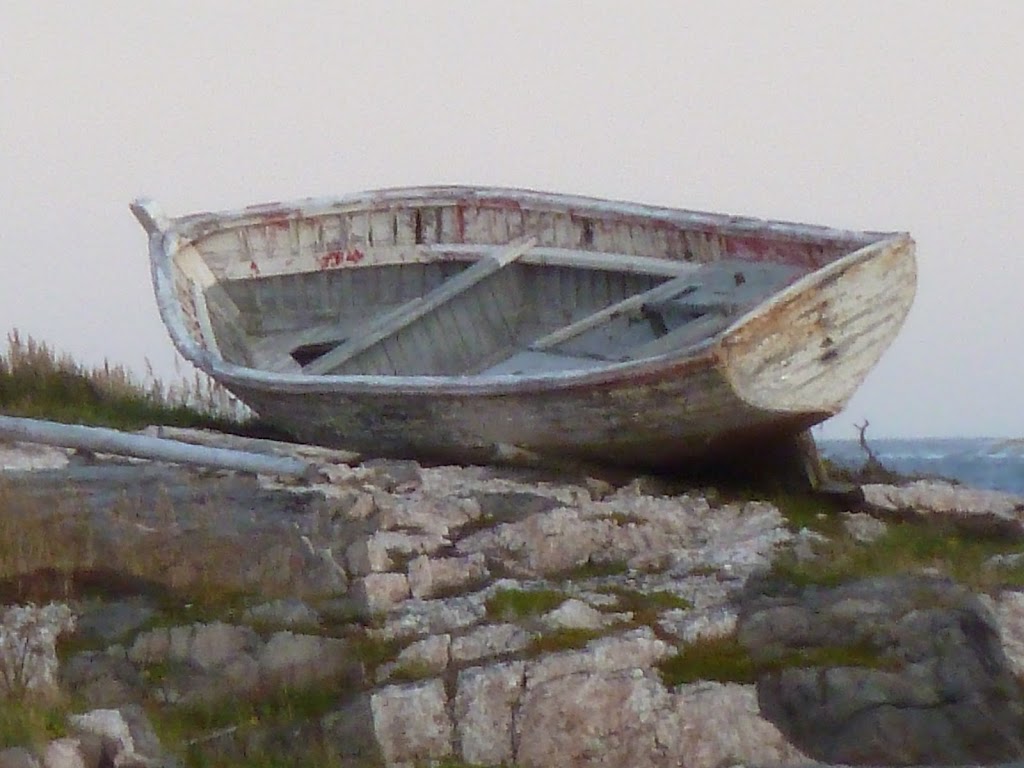 |
| Abandoned Boat |
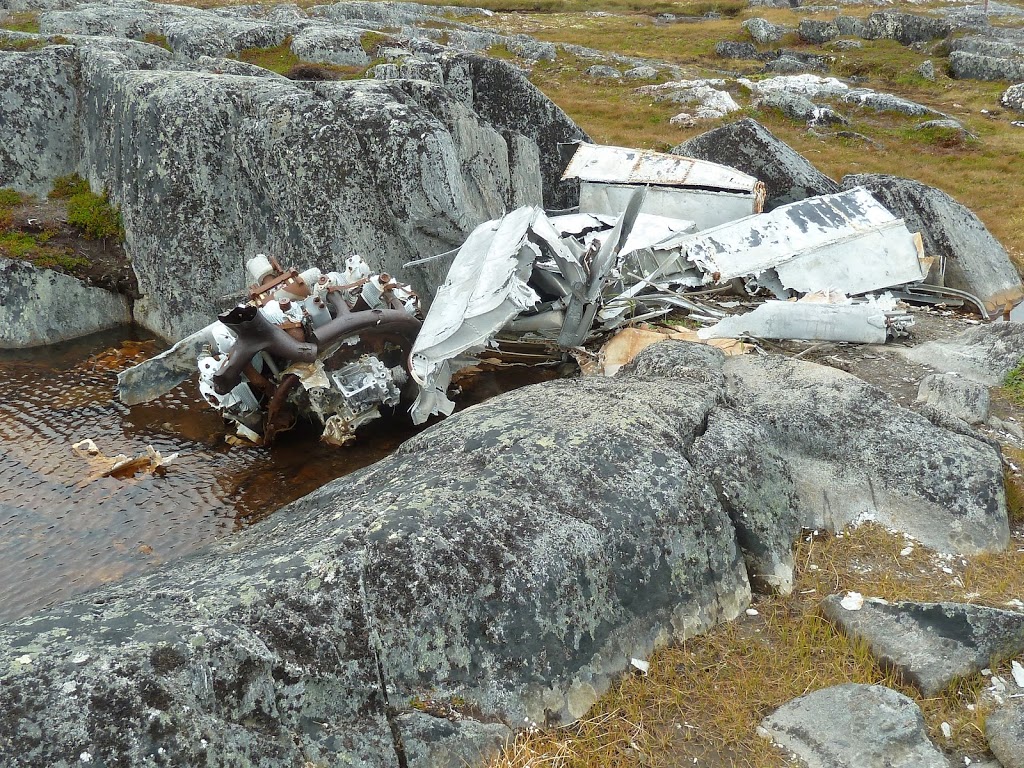 |
| Plane wreck near the islands highest point |
The metasedimentary rocks on the island are probably associated with an intracratonic basin the formed following the Pinwarian orogeny. However, the contact of the Battle Island units and the Pinwarian terrane is not observed. Given the intense mountain building processes at work during the Grenville orogeny, it is incredible to think that these rocks were preserved. The metamorphism of these rocks have produced some interesting mineral assemblages (especially in the calc-silicates) such as diopside, grossular garnet, tremolite, and leucoxene. The granitic pegmatites also have some very interesting mineralogies including occurrences of amazonite, fluorite, and pyrite. More about these rocks can be found in an excellent publication by Charlie Gower from the Geol Surv of Newfoundland and Labrador here.
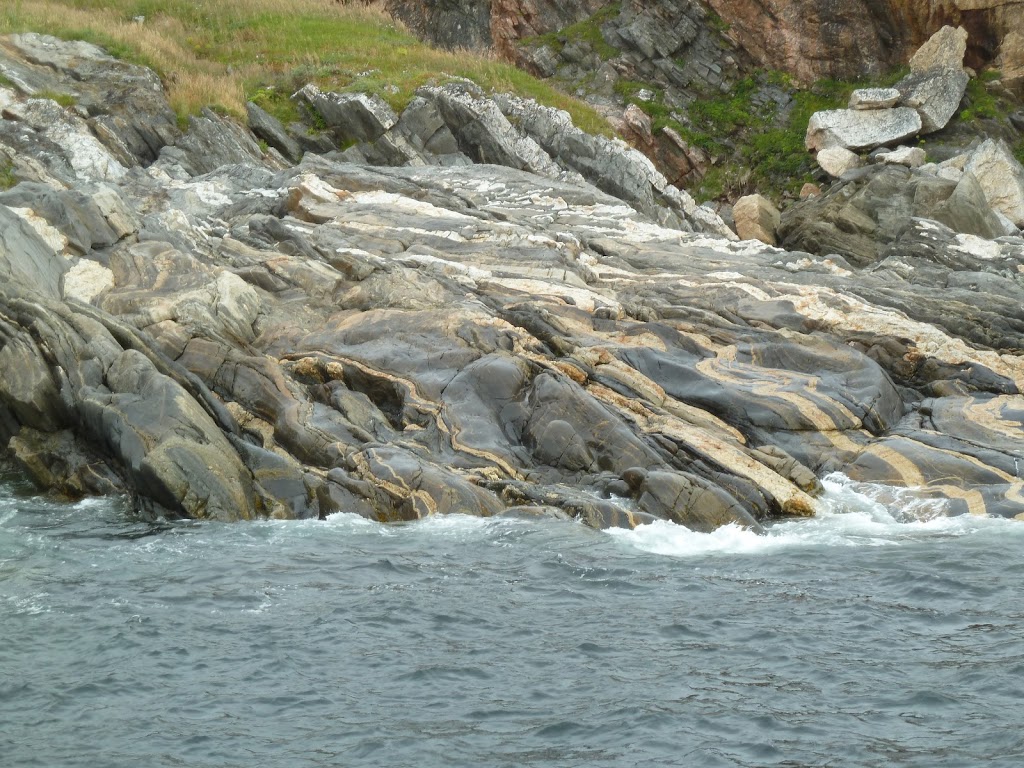
|
| Calc-silicate schist and pegmatite veins on the beach |
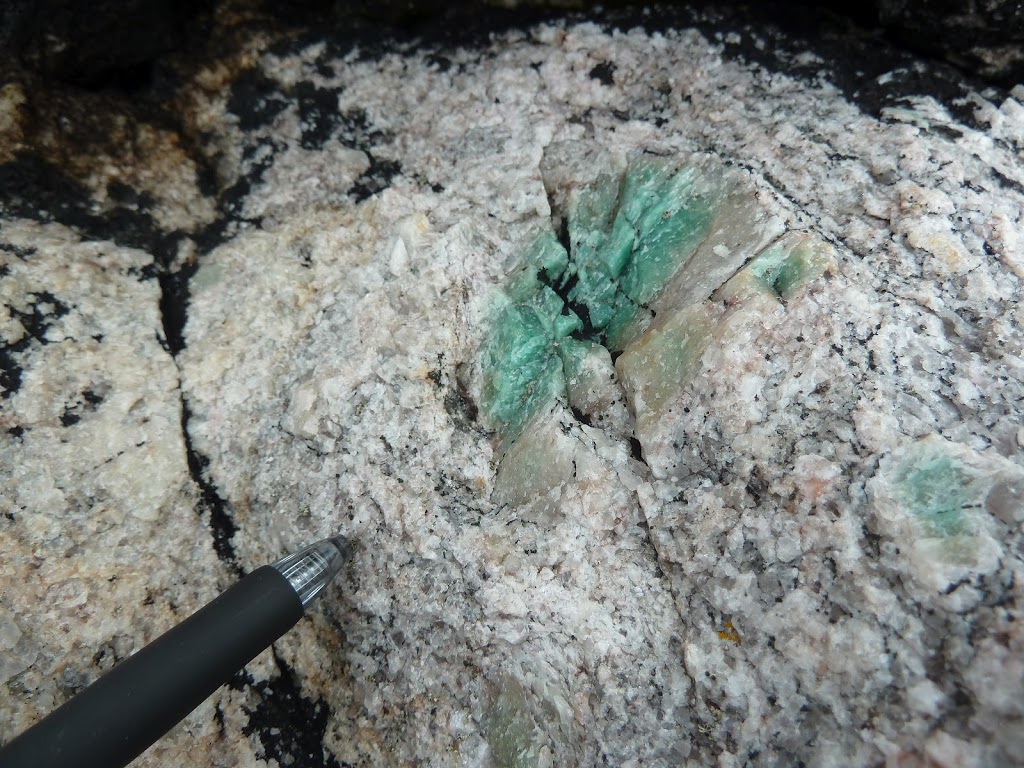 |
| Amazonite |
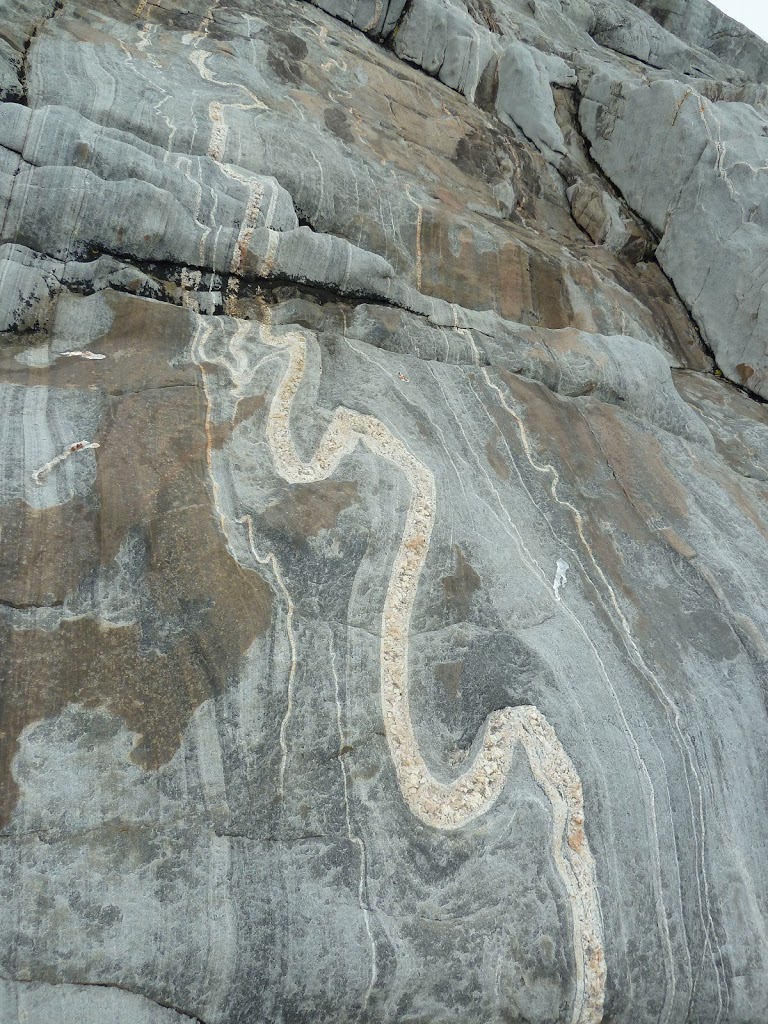 |
| Folded granitic vien |
Despite the interesting mineral occurrences, I came for the relatively boring quartzites and psammites. The majority of the quartz-rich metasedimentary rocks are heavily deformed although preserved sedimentary features (e.g. cross beds) are present throughout the island.
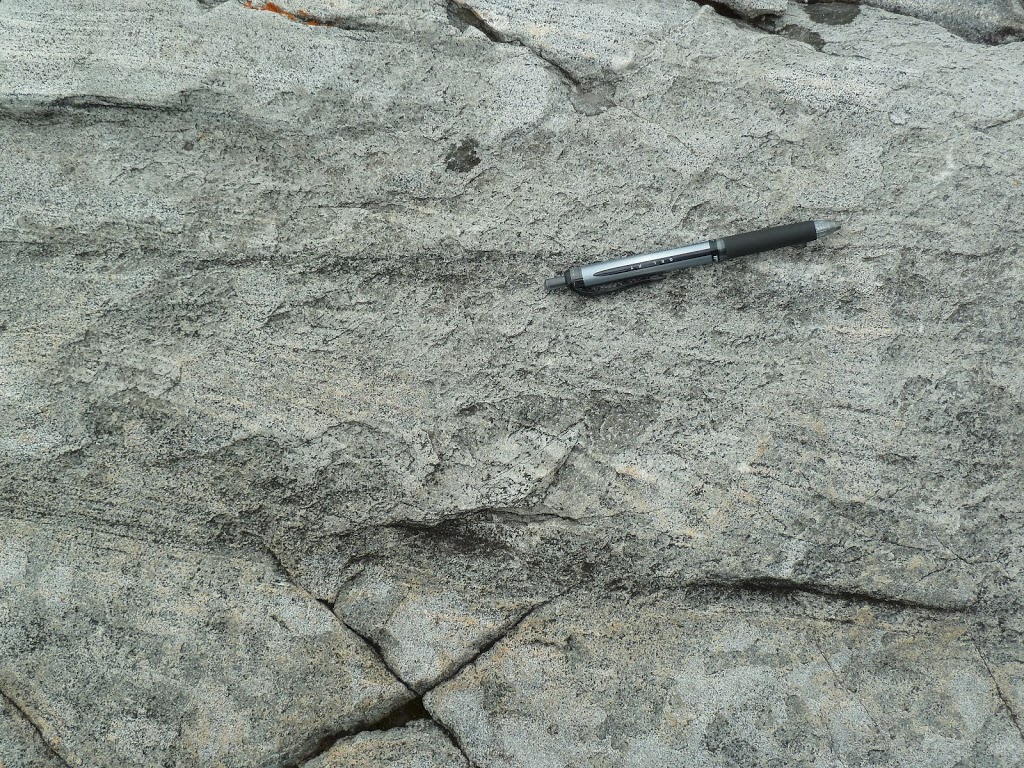 |
| Low-angle cross beds indicative of subaqueous fluid transport |
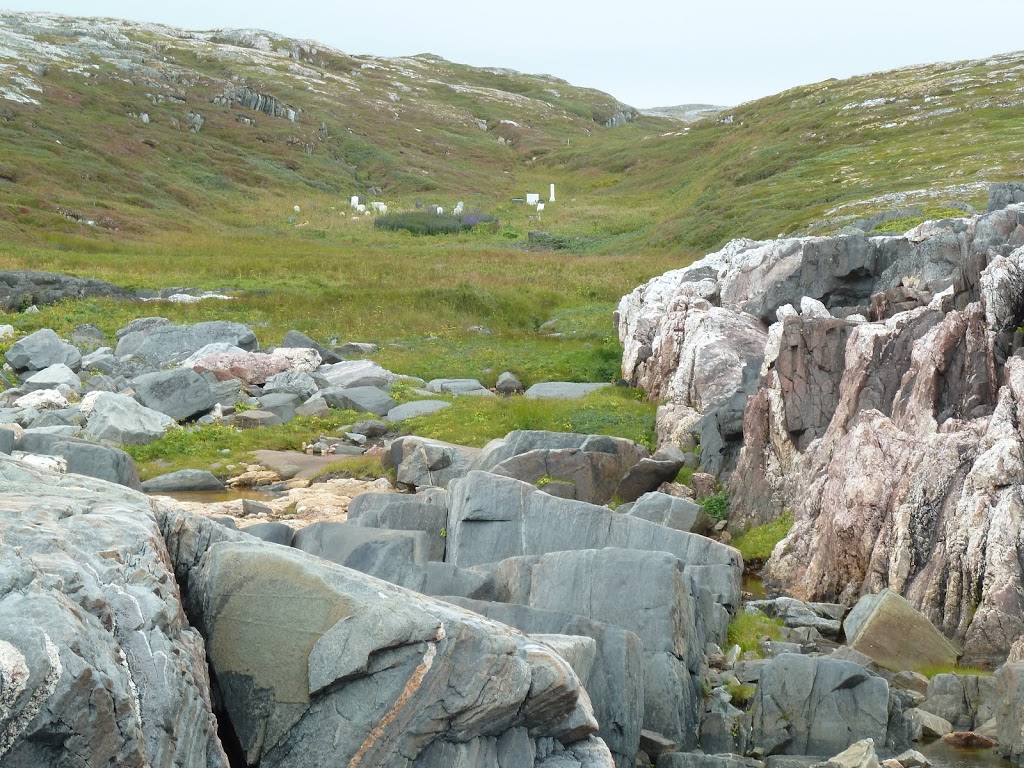 |
Contact between amphibolite and pegmatite/calc-silicate schist
Note the quaint little cemetery in the background |
No trip to Canada would be complete without partaking in the bounty only to be found in the great Maple Leaf country. In Labrador, there is a berry especially treasured: bakeapples. No they are not apples nor are they baked. Also known as cloud berries, these rhizome are similar to raspberries and blackberries but are much sweeter and more tart. Bakeapples can withstand extremely cold temperatures, even well below -40°C. The only reason I am take so much time to describe these berries is because they are a big deal to the Labradorians. Bakeapples are a well sought after delicacy. Because bakeapples are not cultivated with much success they are very expensive (~$7/lb). I was lucky enough to find a few wild bunches that were not picked over.
 |
| Labradorian “bakeapples” or cloud berries |
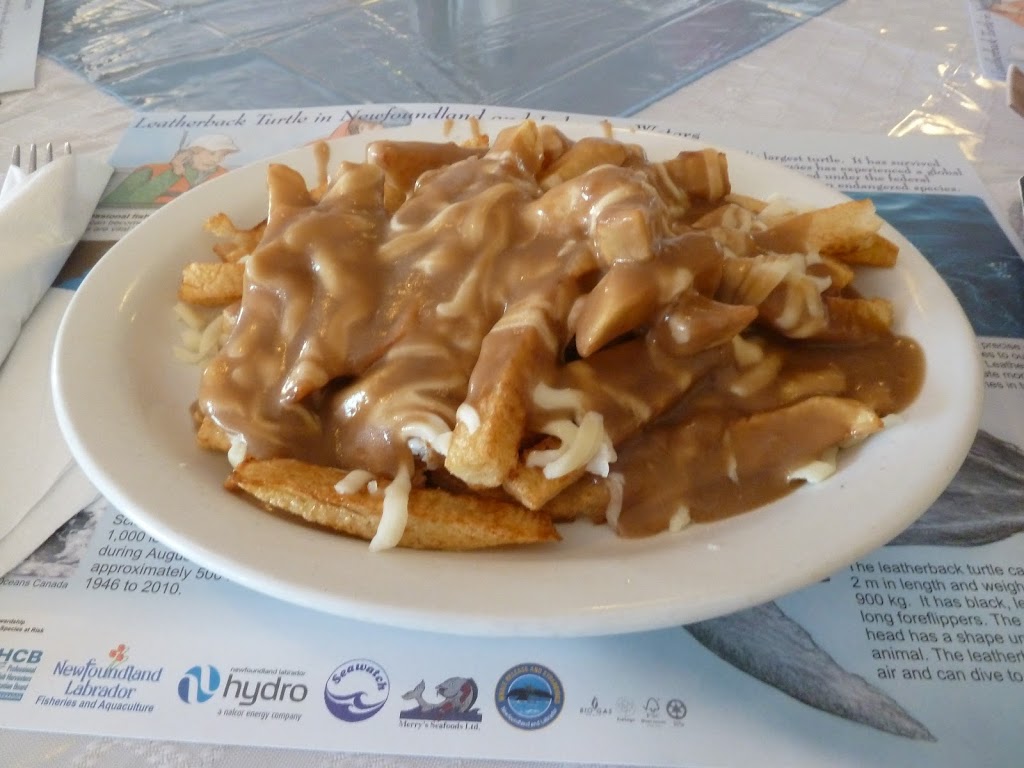
Lastly, the glorious poutine. Take crispy fries, smother them with brown gravy, and sprinkle cheese curds on top and voila: poutine. The Canadians mocked me, but every chance I got I had to order this artery clogging, cholesterol rising, Canadian goodness.












![]() This work is licensed under a Creative Commons Attribution-NonCommercial-ShareAlike 4.0 International License.
This work is licensed under a Creative Commons Attribution-NonCommercial-ShareAlike 4.0 International License.

